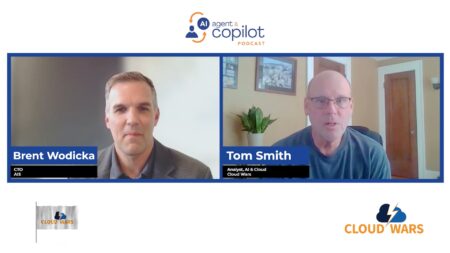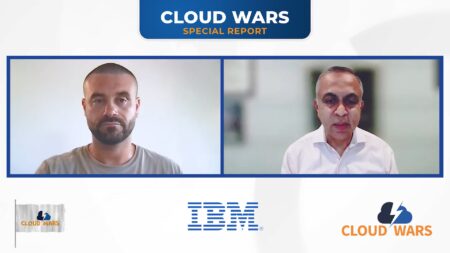It’s common for procurement executives to tout the savings they’ve achieved and the impact they’ve had on the organization. It’s equally common for the chief financial officer (CFO) and their counterparts to push back with, “What savings? How come we don’t see them? Why are our costs increasing year on year if you’re doing such a good job reducing them?”
Both sides have a point. Chief procurement officers (CPO) try to quantify their value to the organization by identifying the cost of a widget at a point in time and comparing it to a newly negotiated price. But an “old price vs. new price” comparison isn’t enough — because specifications and volume fluctuate, and the good or service being negotiated may be new, so there may not be any “old” spend against which to compare. Adding to the complexity: There may be thousands of items being purchased.
CFOs get frustrated when an answer isn’t readily available and the response is, “I’ll get back to you.” When the CPO marshals his/her team to detail and justify their assumptions, they become focused on tactical analysis and take time away from projects that support the business strategy. I’ve been there; once the CFO starts questioning results, it feels like there is a black cloud hanging over procurement. Taking the steps outlined in this analysis — particularly automation — will create a framework to enhance communication and the overall relationship with your CFO.
Where CPOs and CFOs Misunderstand Each Other
Let’s start by reviewing some key reasons the CFO may be skeptical of procurement’s contribution.
Difference in Focus
CFOs operate at the highest levels of the company and have broad financial goals, typically targeted at growing revenue and improving profitability. CPOs who have a laser focus on cost reductions are likely to be seen as tactical contributors, not strategic partners. When a procurement team is loaded with experts in specific categories, there is a tendency for professionals to dive deeply into the categories they know well and not always challenge spend and processes across the entire supply chain.
Insufficient Depth
CPOs tend to report on the direct cost savings achieved through procurement, while the CFO may be looking at the total cost of ownership, including indirect costs such as supplier performance, quality, and risk. That’s a lost opportunity for procurement because if the analysis is incomplete, it means that the team is understating its value. One of the reasons CPOs may stay focused on savings is because it can be a very manual process to gather additional data that the CFO requires. This is where automation can help, making it easier to get into more in-depth cost analysis.
Difference in Approach
CFOs rely on hard data and financial analysis to make decisions. This means they have a natural aversion to reported results that do not have a clear methodology and supporting data. If CPOs are unable to provide clear and detailed information on how they have achieved their savings, then CFOs will not fully believe their claims.
No Process to Retain Achieved Savings
According to Insight Sourcing Group, up to 40% of savings evaporate once a sourcing event is done. One contributor is rogue spend, which occurs when there are gaps in the purchase process and policies that allow purchasers across the firm to buy from whomever they choose, without penalty. That means that no matter the deal, volume with the preferred supplier will always fall short.
How to Improve CFO-CPO Communication
At a high level, there are three steps to fixing these differences in perspective and communication, which will go a long way toward helping the CPO optimize its relationship with the CFO.
Give Them Data on Their Terms
The first step is to understand how the CFO wants to see results reported. There are so many possible ways of calculating savings that it doesn’t matter what the CFO wants or what the prior CFO chose — the value is in the trend over time. Do the CFO and head of supply chain want to see it in two different ways? Show it both ways. One executive team with which I worked couldn’t agree on four different calculations. In the end, they didn’t have to. We gave them ROI based on fully loaded costs, strategic headcount only, including transition costs, and not including transition costs. It doesn’t matter what the calculation actually is; what matters is the consistency of the calculation and the trend over time.
Make and Enforce Rogue Spending Rules
It’s essential to create policies that clearly spell out the rules and expectations on rogue spend. It doesn’t matter how good the deal is; if there are no consequences for rogue spend, then employees will continue to buy from whomever they choose. If this happens, the volumes on which a contract is based can never be achieved.
Automate, Automate, Automate
To provide this broader and deeper swathe of reports, it helps to automate as much of the process as you can for each item where a new price has been negotiated. The more this is automated, the less a CPO will need to divert the team from more strategic projects. Here are a few specific ways to tap automation:
- Pull volume data from accounts payable (AP) and measure it against the forecast
- Use your contract management tool to provide the negotiated prices, then audit invoices from the supplier in question to determine if they’re in compliance
- Run AP summaries in each category to identify suppliers that shouldn’t be there (a result of bad coding or rogue spend)
With this approach, you won’t need to divert the procurement team from strategic activities to work on ways to organize or make sense of all the data gathered by automation tools. The ability to have it organized and summarized into reports likely already resides within your ERP, AP, or contract management system. Just ask for some help from the IT team, if needed. Automating the data collection enables procurement brainpower to be focused on analyzing the results in necessary and nuanced ways, anticipating CFO questions in the process. Another bonus: Manual errors will be reduced.
It’s a good idea to invite a finance department designee appointed by the CFO to audit the process. This helps catch and address outliers before the CFO asks a question you can’t answer. Just as important, the designee can function as an influencer. If someone from the finance department endorses the process, it goes a long way to making the CFO feel comfortable. Come to think of it, the CPO, and their department, will be a lot more comfortable, too.
Want more tech insights for the top execs? Visit the Leadership channel:












